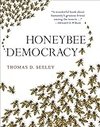Sublime
An inspiration engine for ideas

the heart of the bees’ decision-making process is a turbulent debate among groups of scout bees supporting different options (potential nest sites). These groups compete to gain additional members from a pool of scout bees who are not yet committed to a site. Whichever group first attracts a quorum of supporters wins the competition. The winning
... See moreThomas D. Seeley • Honeybee Democracy
The behavior of each bee in a colony is governed by a simple set of rules that, through interactions with the environment and the other bees, leads to an end that was no part of any individual bee’s intention, allowing the colony as a whole to thrive—as if by an invisible wing. Put another way, bees are relatively dumb. Beehives are remarkably
... See moreJessica C. Flack • Worlds Hidden in Plain Sight: The Evolving Idea of Complexity at the Santa Fe Institute, 1984–2019 (Compass)
The Five Habits of Highly Effective Honeybees (and What We Can Learn from Them): From Honeybee Democracy (Princeton Shorts)
amazon.com
Part III is about the third principle: Morality binds and blinds. The central metaphor of these four chapters is that human beings are 90 percent chimp and 10 percent bee. Human nature was produced by natural selection working at two levels simultaneously. Individuals compete with individuals within every group, and we are the descendants of
... See moreJonathan Haidt • The Righteous Mind: Why Good People Are Divided by Politics and Religion
the 1.5 kilograms (3 pounds) of bees in a honeybee swarm, just like the 1.5 kilograms (3 pounds) of neurons in a human brain, achieve their collective wisdom by organizing themselves in such a way that even though each individual has limited information and limited intelligence, the group as a whole makes first-rate collective decisions.
Thomas D. Seeley • Honeybee Democracy
his human flock, and it was thus right and natural for his subjects to obey him
Jessica C. Flack • Worlds Hidden in Plain Sight: The Evolving Idea of Complexity at the Santa Fe Institute, 1984–2019 (Compass)
the bees’ process of house hunting unfolds in late spring and early summer, when colonies become overcrowded in their nesting cavities (bee hives and tree hollows) and then cast a swarm. When
Thomas D. Seeley • Honeybee Democracy
The experiment was elegant in its simplicity. Using a toy lion and a toy zebra, Barrett asked each child, “When the lion sees the zebra, what does the lion want to do?” The results were surprising: 75 percent of the three-year-olds in both groups answered with some variation of “The lion wants to chase/bite/kill the zebra.” (It must be remembered
... See more